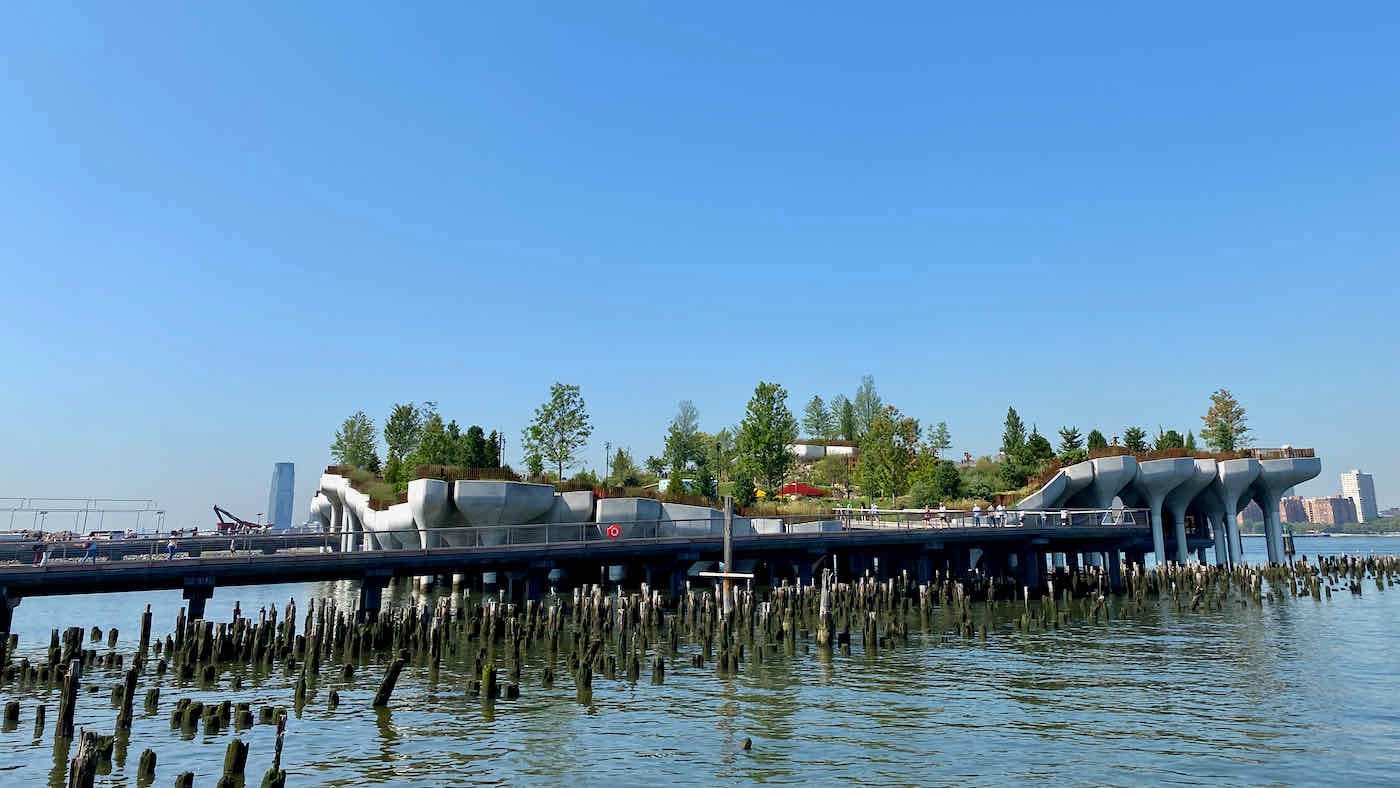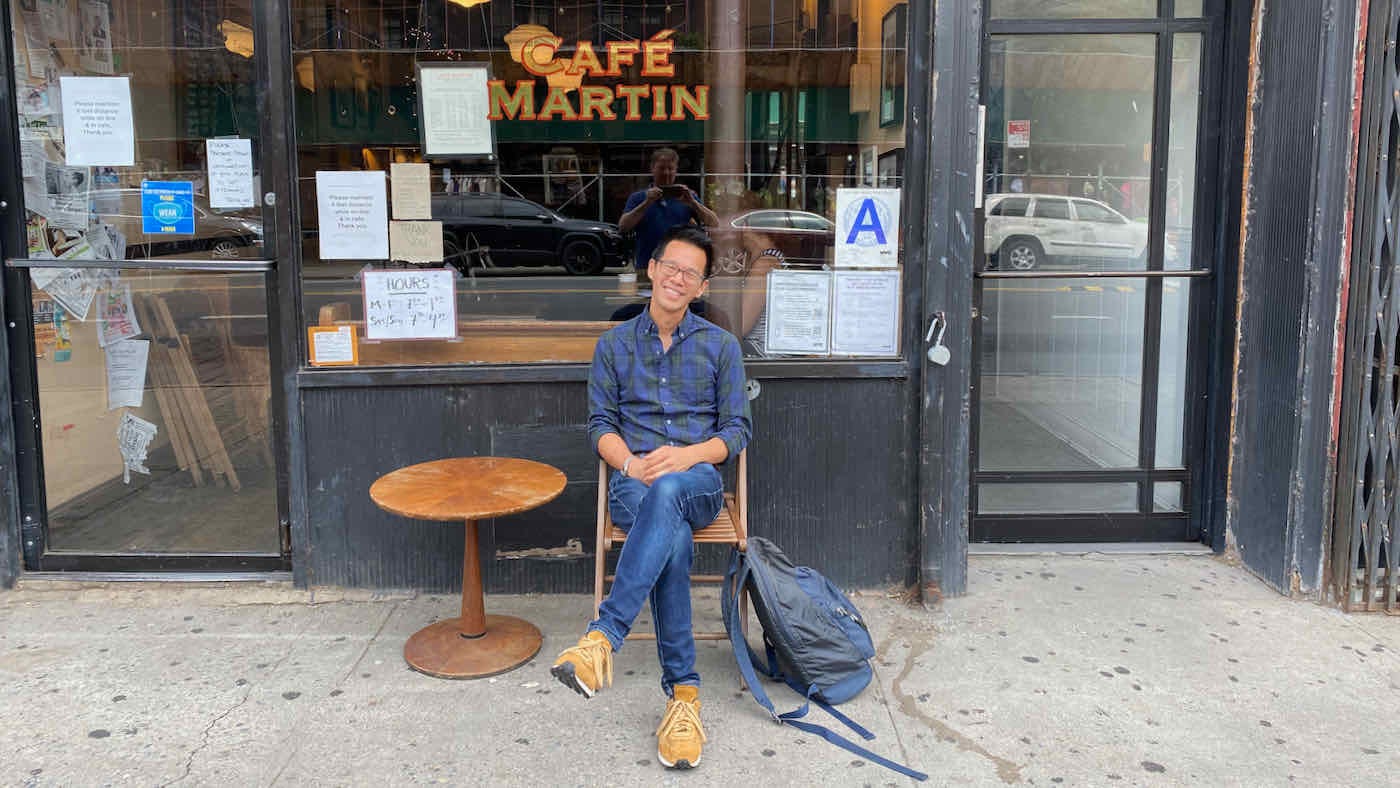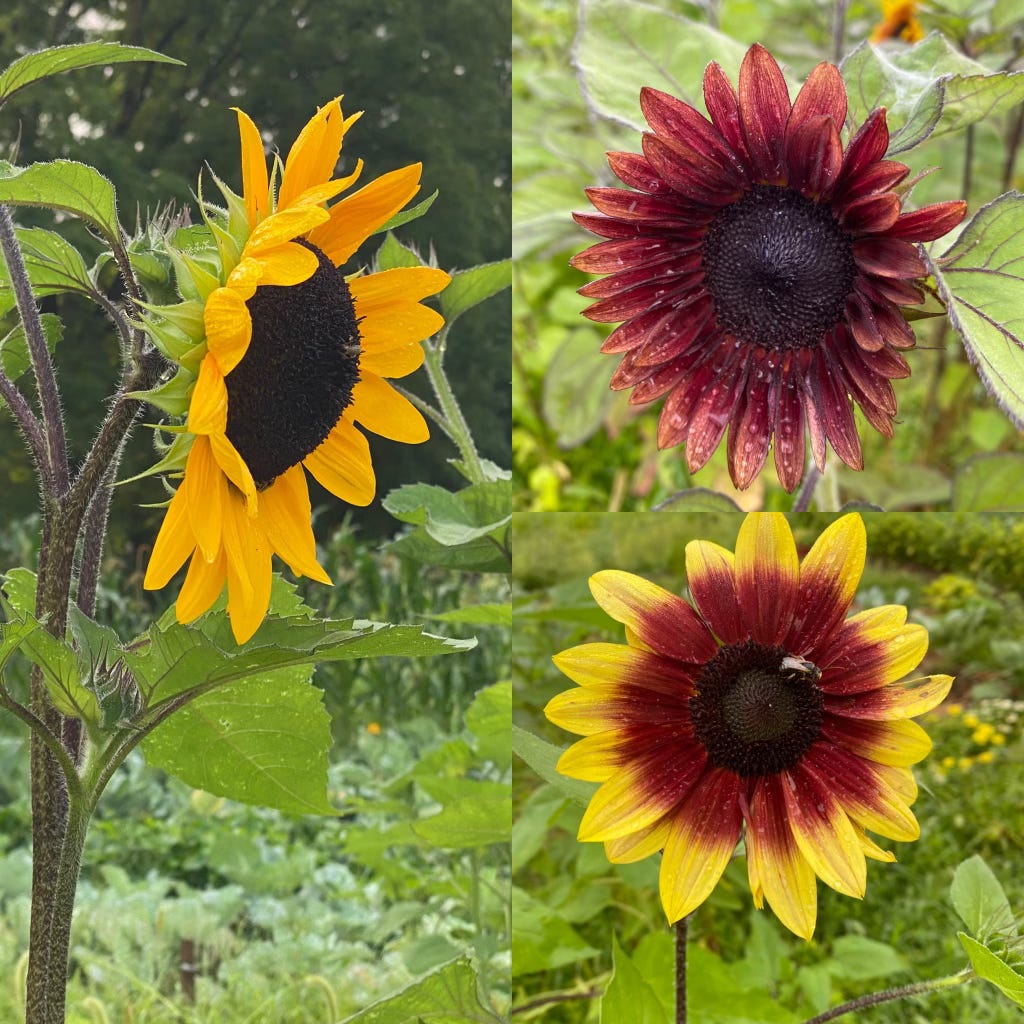Times Change
Some fragmented thoughts on visiting a city where I once lived, change, a garden's durability, and a remarkable story about the aftermath of September 11th
Thursday, August 12
Grand Rapids, Michigan
Greetings, dear reader.
A little story to start: Tristan and I got engaged in London, a city dear to both of us. One didn’t propose to the other; we just kind of decided that we’d marry, we went to afternoon tea to make it official-ish, and then we went to a venerable British jeweler to choose wedding bands.
This jeweler also happens to make gorgeous luggage—not the modern kind with wheels, but the old, heavy trunks with brass rivets and leather straps into which one (or, preferably, one’s valet or lady’s maid) might painstakingly pack one’s necessities for the long journey to Tangier, perhaps, or the Argentine. I was standing there, admiring these beautifully impractical trunks, for which I had neither the use nor the budget nor the appropriate time period nor the muscle nor the staff, when Mr. Pidgeon, who had sold us our wedding bands, came alongside.
“Interested, Mr. Chu?” he said, eyebrow arched.
“If only I had a footman,” I replied. “I’d need a footman.”
“Ah, times change, Mr. Chu,” he said. “Times change.”
Indeed. I think about Mr. Pidgeon and his amazing name and also his words often, especially when confronting the reality of change. I began writing this letter last week, while we were in Brooklyn. It was our first visit to New York City since the “before” times, when I didn’t know words like “N95” and “PCR test” and when “social distancing” was just the thing I reflexively did at every party. Times change.
New York shaped Tristan and me deeply, both individually and then together. He lived there for more than twenty years, I for more than ten. We met there, and, as we explored it together, we fell in love and began to build a life together. On our first date, as we strolled the East Village, we passed St. Mark’s Church-in-the-Bowery. Its facade gently defies the neighborhood’s neat grid, sitting at about a 40-degree angle to East 10th Street, a reminder that the church predates the modern map. “I like how it sits at an angle,” Tristan said.
It’s strange to return as a visitor to the city we once called home, the place where we first made our home together, and to realize that I no longer fit into its neat grid but instead find myself sitting at a different angle to these once-familiar streets. It feels akin to reuniting with a relative from whom I’ve been separated for too long. My reflex as I walked—and walked and walked... I logged seven miles one day, nearly nine the next—was to catalog what had changed and what had not.
There were so many little memories, so many pings of comforting intimacy. It didn’t take long to dust off my mental subway map or to return to seeing “walk” and “don’t walk” signs as mere suggestions—muscle memory, I suppose. So much seemed the same too: The vibrant thrum of a dynamic city that never starts humming (or, alas, honking). Beloved eateries that have survived—and indeed the endless dining options, a citywide buffet that represents the vastly diverse and beautiful backgrounds of New York’s people. Our old church, still regally presiding at the corner of 7th Avenue and Carroll Street in Park Slope. Still so much dog poop on those Brooklyn sidewalks. Still too long a wait for the next R train, which reminds me why we always said that R stands for “rare.”
But New York City today is not the same city we left in 2018. This being New York, there is always something shiny, something new. We spent part of one morning wandering Little Island, a $260 million park that opened in May; set on 132 concrete piles in the Hudson River, it’s bold, remarkable, and thought-provoking. While new restaurants have popped up, other favorites are now empty storefronts. Dog poop aside, the city seemed dirtier than I remembered; every friend I mentioned this to confirmed that they thought it was dirtier too.
One morning, I stopped in at Cafe Martin, a tiny Brooklyn coffee shop that used to be my writing nook; on an old church pew repurposed as cafe seating, fueled by countless cortados and vat-sized mugs of green tea, I wrote my book as well as so many articles and essays. When I walked in, I felt instantly at home—and not. While the pews are still there, half the tables are roped off and a clear plastic partition separates customers from the now-masked barista—signs of our virus-inflected times.
While I was chatting with Jen Ziegler, Cafe Martin’s proprietor, she asked what I miss and don’t miss about New York City. I told her that we miss the food and we miss our friends. I don’t miss the aggression; as I bought a train ticket, a man yelled at me because I wouldn’t give him a dollar. I don’t miss the alternate-side parking (if you know, you know).
On the subway to Brooklyn, I’d been re-reading English Pastoral, the most recent book by the British writer and farmer James Rebanks, which was released in the US last week as Pastoral Song. It’s in part a lovely—and loving—testament to one family’s relationship with the land. Rebanks’s family has farmed in the same corner of Cumbria for hundreds of years, cultivating a sense of place that is rare in our times. Pastoral Song is also a stirring call to consider more carefully how we live and consume and grow. “About half the living things on earth live in the soil,” Rebanks writes. “It is its own world, with all kinds of strange and wonderful relationships between plant roots and algae, bacteria, nematodes, weevils, protozoa, fungi and a host of other things I don’t pretend to understand. A handful of healthy soil can contain more bacteria (and countless other tiny living things) than there are humans on earth.”
In our cities, we have largely paved the soil over in the name of progress and hardened what was soft for the sake of convenience. As Jen and I talked, I looked out the door of the cafe and all I saw were hard surfaces—the glass that encased the bus stop, the concrete of the sidewalks and the streets. These hard things all contain what was once soft—air and water and sand, all transformed through the wonders of human ingenuity and engineering. Obviously there have been tremendous benefits to these innovations, but might there also have been some costs? “I wonder whether we were supposed to live like this,” I said to Jen. “I wonder whether all these hard surfaces help in some small way to harden us.”
Here’s another thing I didn’t acknowledge—couldn’t acknowledge—during my conversation with Jen: The city wasn’t the only organism that had changed in the intervening years. I’ve changed too. To regard the city now and hold it up against the city I remember? I could be that judge, that jury. To regard who I was and compare it to who I am? I guess I just wasn’t ready to walk around New York with that kind of candor.
Change, of course, is inevitable, and there are so many ways to respond to it. Some of us lean into denial, a security blanket with considerably more holes than we’d like to admit. Some of us construct personal fortresses to shield us against what might come—higher walls, more protective barriers, ever more elaborate systems of defense to arm us for battle. Others essentially embody a sigh, as if to say there’s just nothing to be done; it is what it is. And then there’s the posture I’m hoping for and hoping in—a candid openheartedness that is rooted in an enduring and discerning softness that can yield to what’s worthy and resist what’s not and fulfilled in a resilient and true flexibility that means we can bend without breaking.
That kind of openheartedness can only come, I think, from love. And love, perhaps, is the best gift that New York gave me, one that I didn’t grasp when I lived there and probably am only beginning to understand now. New York introduced me to Tristan’s love. New York brought me into the embrace of a congregation that proclaimed truly good news. New York nurtured me as a writer—sometimes tortured me too—and as an eater and as a friend. And all of these loves have helped return me to God’s love, which, when I moved to New York as a frightened, closeted, lonely twentysomething, I was convinced was totally beyond me.
Yes, times change, and so do we, and that is no bad thing, especially if those changes help grow us in our understanding of our belovedness. Also? I still wish I could have that luggage.
What I’m Growing: I have spent far too little time in the community garden over these past few weeks. But we did walk over there yesterday morning, and these sunflowers said: We’re fine! Everything’s fine.
What I’m Reading: I read too quickly most of the time—scanning, skimming, scrolling. But once in a while, I encounter a piece of writing that is so beautifully constructed, so thoughtfully made, that it forces me out of that bad habit and slows me down. That’s how I experienced Jennifer Senior’s piece in the September issue of The Atlantic, which chronicles the long aftermath of 9/11 in the lives of the McIlvaine family. Bobby McIlvaine died at the World Trade Center. Can you believe that happened twenty years ago next month? I became an admirer of Senior’s writing when she was a book critic at the New York Times. In this story, she applies her keen observational skills and her tremendous empathy to conversations with McIlvaine’s parents, his brother, and his fiancée. It’s a deep, kind, stunning story about loss, grief, memory, and above all, love. “Our commitments to one another are what we’re here for—and that, in itself, is life,” she writes. “Even when those commitments are hard. Even when they cause us pain.” I encourage you to read it—and read it slowly.
In my first Farminary class, our professors asked us a beautiful question, one that I’ve since used in my own teaching: What soils do you come from?
The professors chose not to put any other parameters on it, other than to tell us that it was an exercise that might help us begin to understand our own stories. It’s a question that compels us to consider how we have been shaped and cultivated in emotional, spiritual, and physical ecosystems. You could answer it literally or you could respond metaphorically. Sometimes those soils are ultimately unhealthy for us and we have to be transplanted elsewhere; I will always be grateful for the rich Baptist ground in which I was reared, even if I no longer can call it home. Sometimes those soils tell us a story of our ancestors; I’ve never been to my home village in China, but I know its name, Chek Lai, which translates literally to “brown dirt,” and wherever I go, I will always be marked by that heritage. Sometimes those soils testify to recent moves and new belonging; though I cannot yet call myself a Michigander, I know that we’ve found delight in the sands of Sleeping Bear Dunes and in the rich brown stuff in the backyard of our little Grand Rapids home.
What are the places that have informed who you are and who you are becoming? What soils do you come from? I’d love to know!
That’s all I’ve got this week. Thanks, as always, for coming along with me on this ride. I’m so glad we can stumble through all this together, and I’ll try to write again soon.
Yours,
Jeff







I am from libraries
From blueberries and sugar
I am from the fifteen homes in the same number of years
Changing views and warm-breath furnaces
I am from spruce tree needles
Scattered on a soft forest floor where I play
I am from silence and new schools
Often the smallest and always the newest
I’m from innuendo and assumption
And “take care of your brother” or “that’s private”
From my friend’s mother Margaret who shared warm hugs
And from Peg who listened and taught me to bake bread and sew
I’m from lapsed Catholics, suspicious of faith
From Narnia and church services alone at thirteen
I’m from Montreal and hopeful Winnipeg immigrants
Pyrogies and halvah treats
From a family that didn’t tell it’s stories to the children
Did they think we didn’t want to know?
History lost in a generation
Mementos donated to thrift stores
My family story feels like it starts with me
My home soil doesn't grow much. Tumbleweeds and mesquite and long, tough grass. It's a land of resilience and hard, dry, lifeless dirt. The kind that blows around and gets in your ears and eyes and lungs. The soil turned deadly in the Dust Bowl, my family among them, and it was a place of emptiness for me too. Grateful for what it taught me, but I've also dug up those roots to carry them with me across the country, never stopping for too long because I haven't found a safe place to plant them.